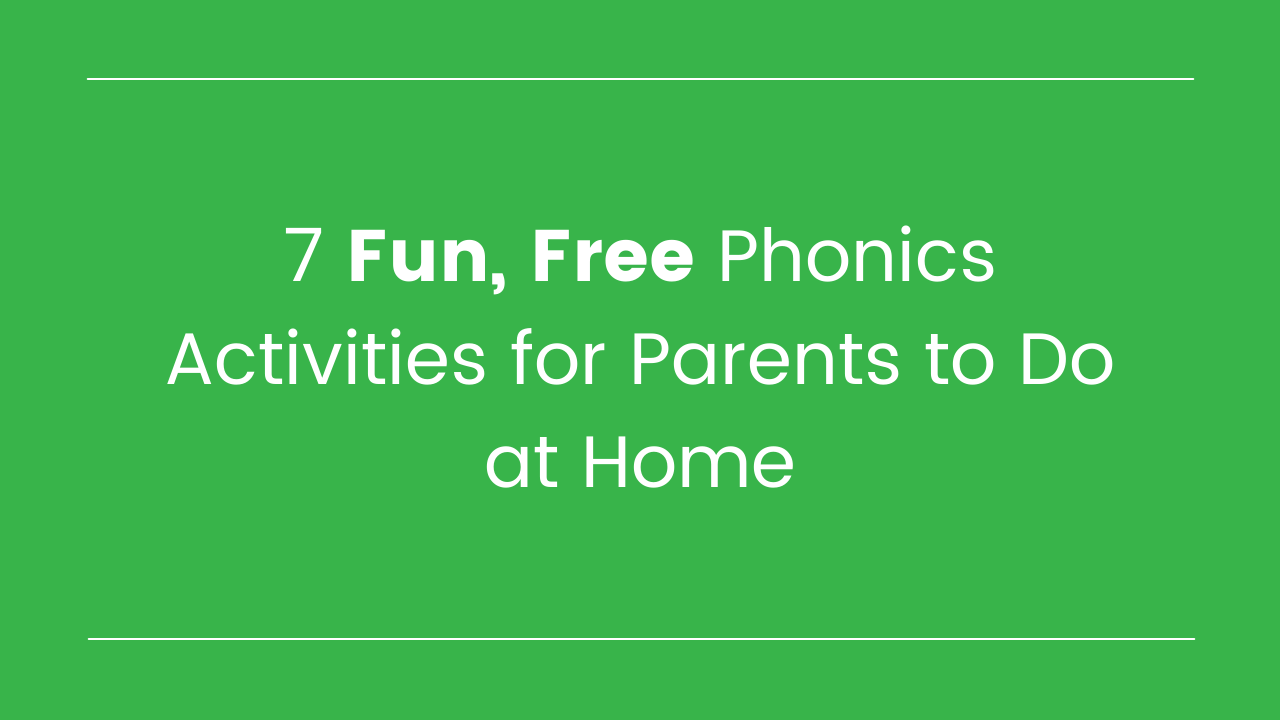
7 Fun, Free Phonics Activities for Parents to Do at Home
Many parents want to support their children with reading. When kids are learning to read, especially in Kindergarten, first grade, and second grade, they need plenty of opportunities to practice phonics skills. Practicing phonics skills at home can support what's happening in the classroom and lead to success with reading. So in this article, we're sharing 7 fun phonics activities for parents to do at home!
Knowing Where to Start with Phonics Skills
Before we get into the actual activities, it's important to consider where to start. Your child's teacher or school may provide you with information about what skill(s) they are working on, based upon the reading or phonics program they are using. And if they don't already share that information with you, you can always ask!
If that information is not available for some reason, check out our free phonics scope and sequence pdf and make an educated guess about what skills your child should be working on.
7 Phonics Activities for Parents to Do at Home
Let's dive into these fun activities!
Activity #1: Phonics Scavenger Hunts
When kids are learning a phonics skill (i.e. the sound for the letter m, or the digraph ch), it's important for them to see examples of the skill being used in real words and books. Scavenger hunts are a fun way to accomplish this!
If your child is learning the alphabet, for example, choose a letter and have them look in books, magazines - or on any type of print you might have in your home. You can also do this in the car; they can search for the letter on billboards and signs!
If your child is reading and working on more complex patterns like the vowel team "ea," you can do the scavenger hunt as described above, but your child will look for whole words with that pattern. You can also have them look for words with the phonics pattern in the books that they're reading and/or the books you read aloud to them.
To increase the fun, try giving them a goal number of letters or words to find - make it a little challenging, but still attainable! They can use a piece of paper to draw a checkmark every time they find an example, or even write the word that contains the example.
Activity #2: Modified Phonics Board Games
If you have any board games at home, change the directions slightly! Every time a player takes a turn, they move their piece (and follow any directions on the game) AND they have to pull a card from a stack.
The stack of cards would be created by you, and the cards would contain alphabet letters (they can say the letter name and/or sound) OR words that match the skill you want to work on (they would read the word out loud).
Activity #3: Fun Phonics Writing
Practicing writing letters and words is an important part of phonics! You can make it fun by having students paint, write in shaving cream spread thinly on a table, trace in sand - or use any other type of material that sounds fun. After they've written a letter or word, have them tell you the letter sound or read the word to you.
Activity #4: "What's the Sound?" Phonics Activity
For this activity, grab a few of your child's toys and some other small objects around the house. Place them on the table. Have your child select one object at a time and tell you the first sound (and perhaps letter) in the word.
If this is easy for your child (it may be easy for first grade and up), have them tell you the last sound or the vowel sound(s) instead!
Activity #5: At-Home Phonics Treasure Hunt
For this game, you'll need some index cards with alphabet letters or words written on them. Hide the index cards around your home. Tell your child how many cards they have to find. When your child finds a card, they have to say the letter sound OR read the word aloud.
Activity #6: Word Building with Magnetic Letters
Do you have a magnetic refrigerator, cabinet, or cookie sheet in your home? If so, have your child use magnetic letters to practice building words! Just like with the other activities, you'll want to choose words that have a phonics pattern the child is learning.
Another activity you can have them do with magnetic letters: make separate groups of consonants and vowels.
Activity #7: Go To The Library!
This one technically isn't done at home - but it's an important one! While it's valuable to have students read individual words, it's also important that they practice reading complete texts (when they are able to do so). So head to your local library!
If you need guidance selecting appropriate books for your child (whether it's for the child to read or for you to read to them), don't hesitate to ask the librarian or even your child's teacher. They will be happy to help you support your child with their reading!
So there you have it - 7 phonics activities for parents to do at home, and they're lots of fun, too! We hope you enjoy these activities!




